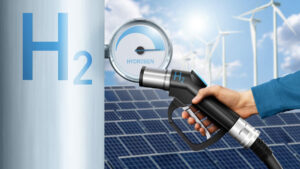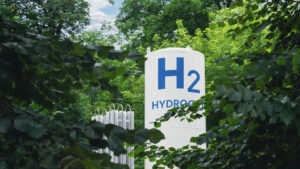Major oil and gas players want to help Australia with aggressive hydrogen push

Exploration push Pic: Getty Images
This week federal and state governments have stepped up their push for hydrogen to become one of Australia’s key energy sources.
And now the big Aussie oil and gas players are watching closely to see just how they can join the party.
A spokesperson for the Australian Petroleum Production and Exploration Association (APPEA) told Stockhead that a “number of our member companies are looking closely at hydrogen, including Woodside, in a high-profile manner”.
“Through our expertise and infrastructure [our industry] has the capacity to collaborate and support in the use of hydrogen as fuel.”
In South Australia, the eighth annual International Conference on Hydrogen Safety is underway and Premier Stephen Marshall yesterday released a ‘Hydrogen Action Plan’.
He argued there was opportunity to be had for South Australia.
“[Hydrogen] fits well into our state’s burgeoning enterprise culture and start-up sector,” he said.
“This initiative will drive the export of hydrogen from South Australia both interstate and overseas, bolstering our economy, and presenting future job opportunities.”
Meanwhile, federal Energy Minister Angus Taylor and Resources Minister Matt Canavan have been in Korea and Japan respectively, spruiking Australia as a destination for hydrogen production.
Canberra plans to release a national hydrogen strategy by the end of the year.
Not just about the exports
This week’s announcements suggest exporting to Asia, just like Australia does now with LNG, would be the main outcome of a hydrogen boom.
But some of it could stay in Australia and not just in place of conventional gas. One use is in electric vehicles. The ACT will open Australia’s first public hydrogen fuel station by year’s end.
While its main customers will be the ACT’s government vehicles, it could have company soon. Chinese car maker Grove wants to bring its hydrogen-powered vehicles to Australia in 2021. There are already two private filling stations, owned by Hyundai.
Right now Hazer Group (ASX:HZR) is the only ASX small cap directly pursuing hydrogen production. On Monday it received $9.4m from the Australian Renewable Energy Agency to fund a production plant. Once operational, it would would create hydrogen from sewage bio-methane.
Very hydrogen capable
Canavan said Australia had the “resources, know-how, infrastructure and research base to produce and supply clean hydrogen to the world”.
The minister said a new report released by Geoscience Australia showed every Australian state and territory had regions with “excellent prospects for hydrogen production”.
“There are more than 200,000 square kilometres of land rated as having great prospects for supporting renewable hydrogen production,” he said.

This estimate assumed hydrogen could be generated entirely from the coast, omitting the inland areas because of infrastructure constraints.
More progressive estimates without infrastructure constraints and taking into account inland generation expanded that area considerably.
The hurdles
But there are a few problems that need to be addressed before hydrogen can really take off.
Even if infrastructure is built, rural areas may be left behind in any potential hydrogen boom. The Geoscience report argued that harvesting water from industrial water production or urban wastewater was a potential solution.
Whether decision makers choose to go down this path or just build conventional infrastructure, the Geoscience Australia report acknowledged that it would come at a cost and be impossible without it.
“Many areas may only become suitable if additional infrastructure investments can improve connection between the coast and inland area that possess renewable energy potential”, it said.
“It is recommended to take a holistic view of hydrogen generation in these regions and explore mutually beneficial arrangements for the oil and gas industry, agricultural water users, town water supplies and hydrogen generation”.
Safety concerns
Australia’s chief scientist Alan Finkel, who spoke immediately after the South Australian Premier at yesterday’s hydrogen conference, flagged the issue of public safety as a hurdle to overcome.
“Its [hydrogen’s] benefits across all areas will only be realised by a wholehearted commitment to safety and transparency, and our ability to bring the Australian community along on the journey,” he said.
“To maintain the trust of the Australian people, every effort must be made to protect public health and safety and to provide straightforward answers to any legitimate concerns about producing hydrogen at scale.
“We must also ensure the process of determining the safety and environmental standards of hydrogen is more extensive and more accessible to the public than for any comparable enterprise.”
One example is California, which educated its public about hydrogen by way of exhibits, vehicle demonstrations and presentations to communities, schools and conferences.
Hydrogen cars are already being trialled on the road in parts of Australia, while earlier this year Queensland became the first Australian state to ship 200g of “green” hydrogen.
Meanwhile, Western Australia formed its own Renewable Hydrogen Council in October last year, not long after government-backed CSIRO released what is essentially a blueprint for the development of the hydrogen industry in Australia.
Read more:
Report: Clean hydrogen tech may compete with the big boys around 2030
Aussie states are burning up with hydrogen fever… and now even cooking with it
The real numbers behind what hydrogen can do – and what it can’t
UNLOCK INSIGHTS
Discover the untold stories of emerging ASX stocks.
Daily news and expert analysis, it's free to subscribe.
By proceeding, you confirm you understand that we handle personal information in accordance with our Privacy Policy.








